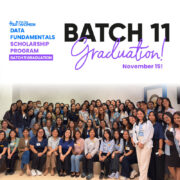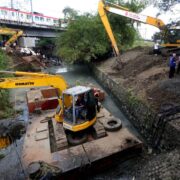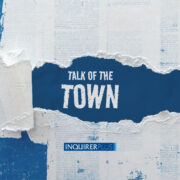More than just reading

In the late 1980s, two American researchers conducted what would become one of the most cited experiments in education. A group of Grade 7 and 8 students was told to read a passage about baseball and answer a set of comprehension questions. As expected, strong readers who knew a lot about the sport obtained the highest scores. Surprisingly, however, students with lower reading ability but with extensive knowledge of baseball outperformed those with stronger reading skills but limited knowledge of the sport.
The now-famous baseball study challenged the long-held belief that reading is a skill that must be taught in isolation. It revealed how our prior knowledge of a topic acts like a scaffold that helps us make sense of new concepts by connecting them to what we already understand. A 2019 study published in Psychological Science reinforced this idea. Researchers found that when students are unfamiliar with 59 percent or more of the terms in what they’re reading, their ability to comprehend the text significantly suffers. To develop a child’s comprehension skills, it’s not enough to teach them how to read. We must assess what they know, build on that knowledge, and guide them to find the connections between ideas.
Understanding the science behind teaching comprehension skills matters now more than ever. In 2022, the Philippines ranked among the bottom 10 countries in reading comprehension in the 2022 Program for International Student Assessment. According to the World Bank, the Philippines has a 90 percent learning poverty rate, which means nine out of 10 Filipino 10-year-olds are unable to read or understand a simple paragraph. Since assuming office, Department of Education (DepED) Secretary Sonny Angara has prioritized addressing the learning crisis by launching various targeted interventions. Last week, DepEd announced a major improvement: the number of Grade 3 students who were unable to recognize letters dropped from 65,000 last year to just 2,000. This progress is certainly no small feat, and serves as a promising sign that urgent, focused efforts can move the needle.
But the real challenge lies ahead. How do we make sure students can critically understand what they read? When schools think about catch-up measures, especially for older students, a common but flawed response is to keep sacrificing instructional time for other subjects to focus solely on reading. However, as the baseball study shows, comprehension is deeply tied to background knowledge and vocabulary, and reading initiatives need to be integrated with, rather than separated from, the broader learning experience. The most effective interventions find the right balance between pulling out struggling readers for small-group remediation, when necessary, while also providing them with access to targeted, differentiated instruction that is embedded within their regular classes.
At the same time, literacy experts assert that remediation of older nonreaders should not be limited to giving them simplified reading-level appropriate texts. While this may seem supportive on paper, it deprives them of opportunities to be exposed to the vocabulary and ideas they need to catch up. Instead, teachers must use scaffolding techniques (e.g., pre-teaching difficult words they’ll encounter or using graphic organizers) to guide struggling students to comprehend age-appropriate material. When done well, this approach fosters the student’s cognitive growth and strengthens their confidence and self-belief.
Beyond classroom-level remediation, an integral part of the solution lies in designing a curriculum that does not just emphasize “core subjects” but one that embraces the value of an interdisciplinary education. It is easy to dismiss some fields as “minor subjects” or “nice-to-haves.” But when a student learns about science and math alongside history, literature, and the arts in a coherent and cumulative manner, they encounter key concepts and vocabulary repeatedly across subjects as opposed to learning them in fragmented units. This strengthens comprehension by training them to build meaningful connections across domains, and to flexibly apply what they know to different contexts.
In training sessions, I have often heard teachers say that although they agree that reading skills must be integrated in every subject and that “every teacher has to be a reading teacher,” they are not always explicitly taught how to do this. While there is no doubt that our public school teachers are some of the most resourceful people I have ever met, they need access to specialists, updated resources, and constant instructional coaching to help them track student progress and adapt their teaching accordingly.
DepEd has already taken encouraging steps in reducing the number of nonreaders in the country. Now comes the harder task: Ensuring every child doesn’t just learn how to read, but is also equipped with the thinking skills, sound judgment, and confidence to make sense of, and effectively navigate the world.


















